Search results for: 'stone a'
-
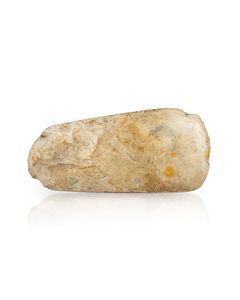 Neolithic axe head
Neolithic axe headA Stone Age tool from Aalborg in Denmark. Nicely polished and impressive workmanship.
Price: on request Neolithic axe head
Neolithic axe headFinely crafted tool from the New Stone Age of Europe. A specimen of the thick butted type.
Price: on request Neolithic axe head
Neolithic axe headFinely crafted tool from the New Stone Age of Europe. A specimen of the thin butted type.
Price: on request Neolithic axe head
Neolithic axe headNicely crafted tool made of beige stone. From the New Stone Age of Europe. A specimen of the thick butted type with thin blade.
€245 Neolithic axe head
Neolithic axe headFinely crafted tool made of nice dark grey flint. From the New Stone Age of Europe. A specimen of the thick butted type with thin blade.
Price: on request Neolithic axe head with through hole
Neolithic axe head with through holeFinely crafted tool from the New Stone Age of Europe. Made from greenish grey rock. With a through hole at the neck as a remarkable feature.
Price: on request Small axe head from the New Stone Age
Small axe head from the New Stone AgeCompact stone axe from the 3rd Millenium BC. Found on the Danish island of Moen.
Price: on request Six neolithic stone tools
Six neolithic stone toolsNice group of artefacts from the Northern European Neolithic. One blade, two dagger fragments and three axe head fragments. All found in Northern Germany.
Price: on request Polished stone age axe head
Polished stone age axe headThe small tool from the younger Stone Age has a nicely polished surface revealing the beautiful black stone it is made of. Approx. 4200 to 2400 BC.
Price: on request Small Stone Age axe made of rock
Small Stone Age axe made of rockThe tool with finely polished blade is of the point-butted type. From the Stone Age of western Europe.
Price: on request Neolithic axe head
Neolithic axe headThe strong blade was probably used for a battle axe. Crafted from grey rock. An artefact from the Neolithic Age of Europe.
€490 Stone Age chisel from Northern Germany
Stone Age chisel from Northern GermanyAsymmetrically shaped chisel with two polished sides. Made of light flint. Approx. 3400 to 2400 BC.
Price: on request Powerful and heavy work axe
Powerful and heavy work axeRare and impressively large and heavy tool from the New Stone Age. The axe type comes from Jutland, Denmark.
Price: on request Neolithic flint dagger from Denmark
Neolithic flint dagger from DenmarkDouble-edged blade and flat shaft made of beautiful flintstone. A status symbol from the transitional period between Late Neolithic and Early Bronze Age.
€480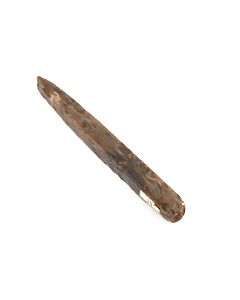 Neolithic chisel from Northern Germany
Neolithic chisel from Northern GermanyElegantly shaped chisel with two polished sides. Made of dark flint. Approx. 3400 to 2400 BC.
Price: on request Flint knife from Northern Germany
Flint knife from Northern GermanyFlat two-edged stone blade from the Dagger Period of Northern Europe.
Price: on request Neolithic axe head from Luetzow in Northern Germany
Neolithic axe head from Luetzow in Northern GermanyPolished axe made of beautiful brown flint. It was found more than 100 years ago near the town of Luetzow.
Price: on request Neolithic flint dagger from Denmark
Neolithic flint dagger from DenmarkDouble-edged blade and flat shaft made of beautiful flintstone. A status symbol from the transitional period between Late Neolithic and Early Bronze Age.
Price: on request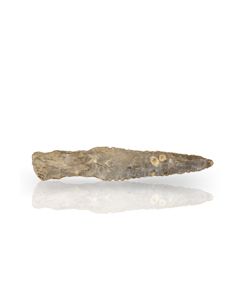 Neolithic flint dagger from Denmark
Neolithic flint dagger from DenmarkDouble-edged blade and flat shaft made of beautiful flintstone. A status symbol from the transitional period between Late Neolithic and Early Bronze Age.
€650 Neolithic axe mounted for museum display
Neolithic axe mounted for museum displayThe stone tool is from the European Neolithic. A special feature is the museum-quality custom made shaft which gives a great impression of the tool's former mounting.
Price: on request Neolithic dagger blade from Denmark
Neolithic dagger blade from DenmarkDouble-edged, pointed blade made of beautiful flint. The blade was for a dagger, the typical status symbol from the transitional period between Late Neolithic and Early Bronze Age.
€480 Neolithic dagger blade from Denmark
Neolithic dagger blade from DenmarkDouble-edged, pointed blade made of beautiful flint. The blade was for a dagger, the typical status symbol from the transitional period between Late Neolithic and Early Bronze Age.
€470 Large neolithic axe head
Large neolithic axe headA tool from the Early Neolithic of Europe. Nicely polished and impressive by its size and weight.
Price: on request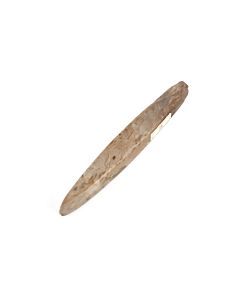 Neolithic chisel from Northern Germany
Neolithic chisel from Northern GermanyElegantly shaped chisel with two polished sides. Made of grey flint. Approx. 3400 to 2400 BC.
Price: on request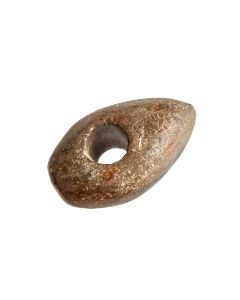 Small battle axe of the Single Grave culture
Small battle axe of the Single Grave cultureThe axe head from the younger Stone Age has a compact shape. Axes that have clearly been used as weapons are rare. Most axe types have probably served peaceful purposes.
Price: on request Neolithic sickle from Denmark
Neolithic sickle from DenmarkCrescent-shaped blade made of beautiful brown flint. This tool represents an intermediate state within the radical transition from Neolithic to Bronze Age.
€700 Neolithic flint sickle from Denmark
Neolithic flint sickle from DenmarkCrescent-shaped blade made of beautiful brown flintstone. This tool represents an intermediate state within the radical transition from Neolithic to Bronze Age.
€530 Neolithic flint sickle from Denmark
Neolithic flint sickle from DenmarkCrescent-shaped blade made of beautiful reddish-brown flintstone. This tool represents an intermediate state within the radical transition from Neolithic to Bronze Age.
€520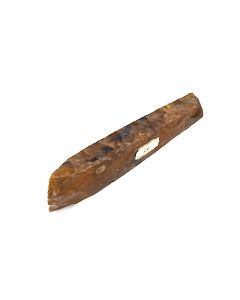 Neolithic axe head from Luetzow in Northern Germany
Neolithic axe head from Luetzow in Northern GermanyNice polished axe from brown flint. It was found more than 100 years ago near the town of Luetzow.
Price: on request Vessel of the Linear Pottery culture
Vessel of the Linear Pottery cultureThe beautifully decorated tableware or cookware was made by the earliest peasants of Central Europe, the Late Stone Age Linear Band Ware settlers. A find from Southern Germany in great condition.
Price: on request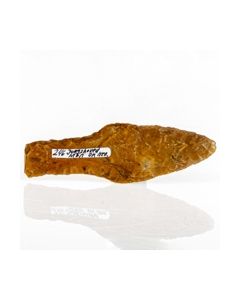 Scandinavian flint dagger
Scandinavian flint daggerNicely worked flint dagger from the transitional period between Late Neolithic and Early Bronze Age. Jungshoved on the Danish Island of Moen was the find spot.
Price: on request Neolithic dagger
Neolithic daggerNicely worked flint dagger of type III. Sprove on the Danish Island of Moen was the find spot. 1700 to 1500 BC.
Price: on request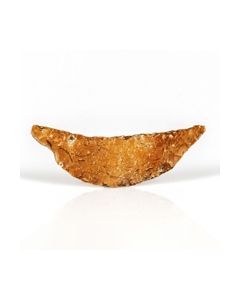 Small Neolithic sickle from Northern Germany
Small Neolithic sickle from Northern GermanyThe crescent-shaped blade is made of reddish brown flint. This tool represents an intermediate state within the radical transition from Neolithic to Bronze Age.
Price: on request Michelsberger culture artefacts from museum stock - found in Camp-a-Cayaux, Belgium
Michelsberger culture artefacts from museum stock - found in Camp-a-Cayaux, BelgiumFunde vom Camp-a-Cayaux, bei neolithischer Flintmine in Spiennes, Belgien. Abschläge und Werkzeuge. 4500 v. Chr. bis 3500 v. Chr.
Price: on request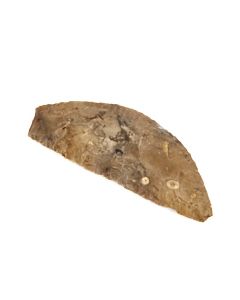 Neolithic sickle from Northern Germany
Neolithic sickle from Northern GermanySmall crescent-shaped blade made of beautiful grey flint. This tool represents an intermediate state within the radical transition from Neolithic to Bronze Age.
Price: on request Neolithic sickle from Northern Germany
Neolithic sickle from Northern GermanyCrescent-shaped blade made of beautiful grey flint. This tool represents an intermediate state within the radical transition from Neolithic to Bronze Age.
Price: on request

